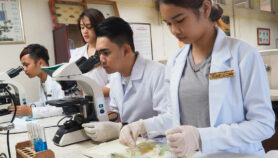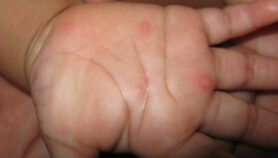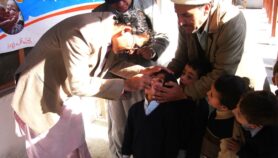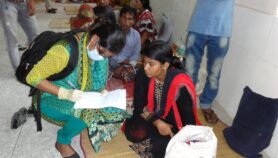By: Neena Bhandari
Send to a friend
The details you provide on this page will not be used to send unsolicited email, and will not be sold to a 3rd party. See privacy policy.
[SYDNEY] A dash of starch added to baby food could be a cost-effective way of reducing infant mortality due to malnutrition and diarrhoea.
A joint team from Flinders University, the South Australia Health and Medical Research Institute and the University of Malawi is testing the gut bacteria in African babies below 12 months to see if they have the bacteria to ferment resistant starch, a fibre component present in everyday diet.
““The intake of resistant starch around the time solids are introduced to an infant may [thus] have a beneficial effect on the infant gut microbiota and potentially even immune development.”
By Geetha Gopalsamy, Flinders University
Resistant starch is a type of starch that isn’t fully broken down, but rather turned into short-chain fatty acids by intestinal bacteria. It naturally occurs in grains, lentils, vegetables, potato, pasta and fruits like banana. It can also be added as a supplement to porridge, bread and biscuits.
“When the bacteria in the large intestine ferment resistant starch, they make short chain fatty acids, which we believe lead to better immune function, improved nutrient absorption and growth of infants,” says Elissa Mortimer, global health unit project manager at Flinders University in South Australia.
“Resistant starch also has a role in the treatment of diarrhoea. In the large intestine, it creates an environment which allows the body to re-absorb some of the water that would otherwise be lost in the case of diarrhoea,” she adds.
Diarrhoea accounts for nine percent of all deaths among children under five and most deaths occur among children below two years old in South Asia and Sub-Saharan Africa, according to Unicef (the UN Children’s Fund.
Resistant starch has been successfully tested on stool samples collected from 16 healthy Australian infants in Adelaide.
“Using in vitro batch fermentation methodology, I was able to determine that the stool from infants, who had just commenced [eating] solids, had the capacity to ferment the chemically modified resistant starch and that the growth of bacteria associated with health benefits (bifidobacteria) was selectively increased,” says Geetha Gopalsamy, a gastroenterologist and researcher at Flinders University.
“The intake of resistant starch around the time solids are introduced to an infant may [thus] have a beneficial effect on the infant gut microbiota and potentially even immune development,” she notes.
The team is now testing stool samples collected from 35 infants comprising pre-weaning exclusively breastfed babies and early weaning infants in Neno district, Malawi.
Kondwani Katundu, a medical doctor and researcher at the University of Malawi, notes: “In several African countries, maize meal porridge is cooked and often eaten throughout the day. The cooked then cooled cycle creates retrograded resistant starch along with native starch granules so a typical diet could be quite high in resistant starch.” To gauge the quantity of resistant starch that would be required to show health benefits, the researchers propose a two-year feeding study in India.
“Previous studies have recommended that about 20 grams per day of high amylose maize starch (HAMS) is beneficial for health. HAMS costs about US$2.30 per kilogramme,” explains Mortimer.
Says Majella Hurney, Save the Children Australia’s policy adviser: “Malnutrition is the underlying cause of 45 per cent of child deaths aged under five, and makes children highly vulnerable to illnesses such as diarrhoea, pneumonia and malaria. Investing in child nutrition can save lives and is a critical driver for human and economic development.”
This piece was produced by SciDev.Net’s South-East Asia & Pacific desk.














